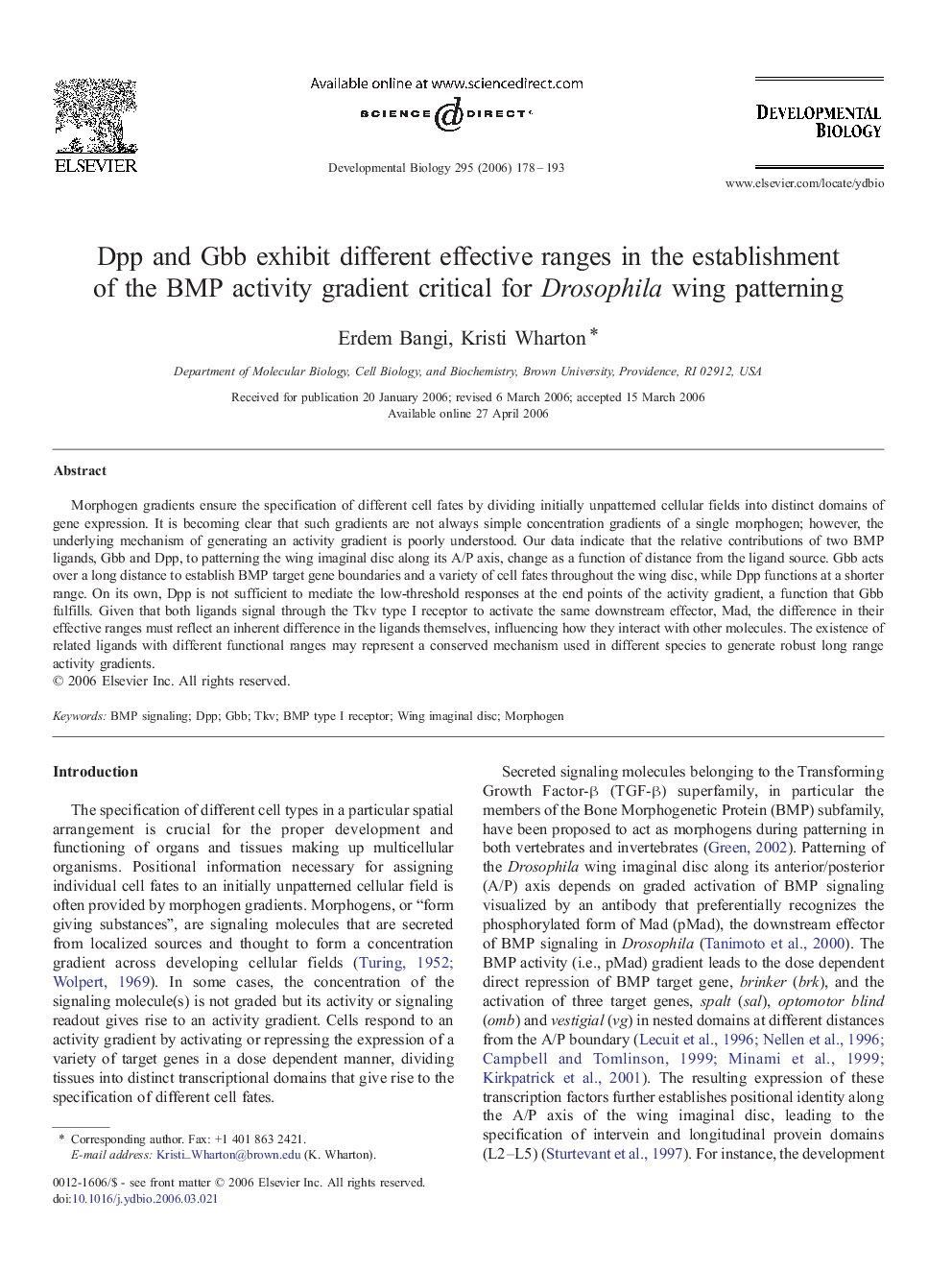| Article ID | Journal | Published Year | Pages | File Type |
|---|---|---|---|---|
| 2175892 | Developmental Biology | 2006 | 16 Pages |
Morphogen gradients ensure the specification of different cell fates by dividing initially unpatterned cellular fields into distinct domains of gene expression. It is becoming clear that such gradients are not always simple concentration gradients of a single morphogen; however, the underlying mechanism of generating an activity gradient is poorly understood. Our data indicate that the relative contributions of two BMP ligands, Gbb and Dpp, to patterning the wing imaginal disc along its A/P axis, change as a function of distance from the ligand source. Gbb acts over a long distance to establish BMP target gene boundaries and a variety of cell fates throughout the wing disc, while Dpp functions at a shorter range. On its own, Dpp is not sufficient to mediate the low-threshold responses at the end points of the activity gradient, a function that Gbb fulfills. Given that both ligands signal through the Tkv type I receptor to activate the same downstream effector, Mad, the difference in their effective ranges must reflect an inherent difference in the ligands themselves, influencing how they interact with other molecules. The existence of related ligands with different functional ranges may represent a conserved mechanism used in different species to generate robust long range activity gradients.
